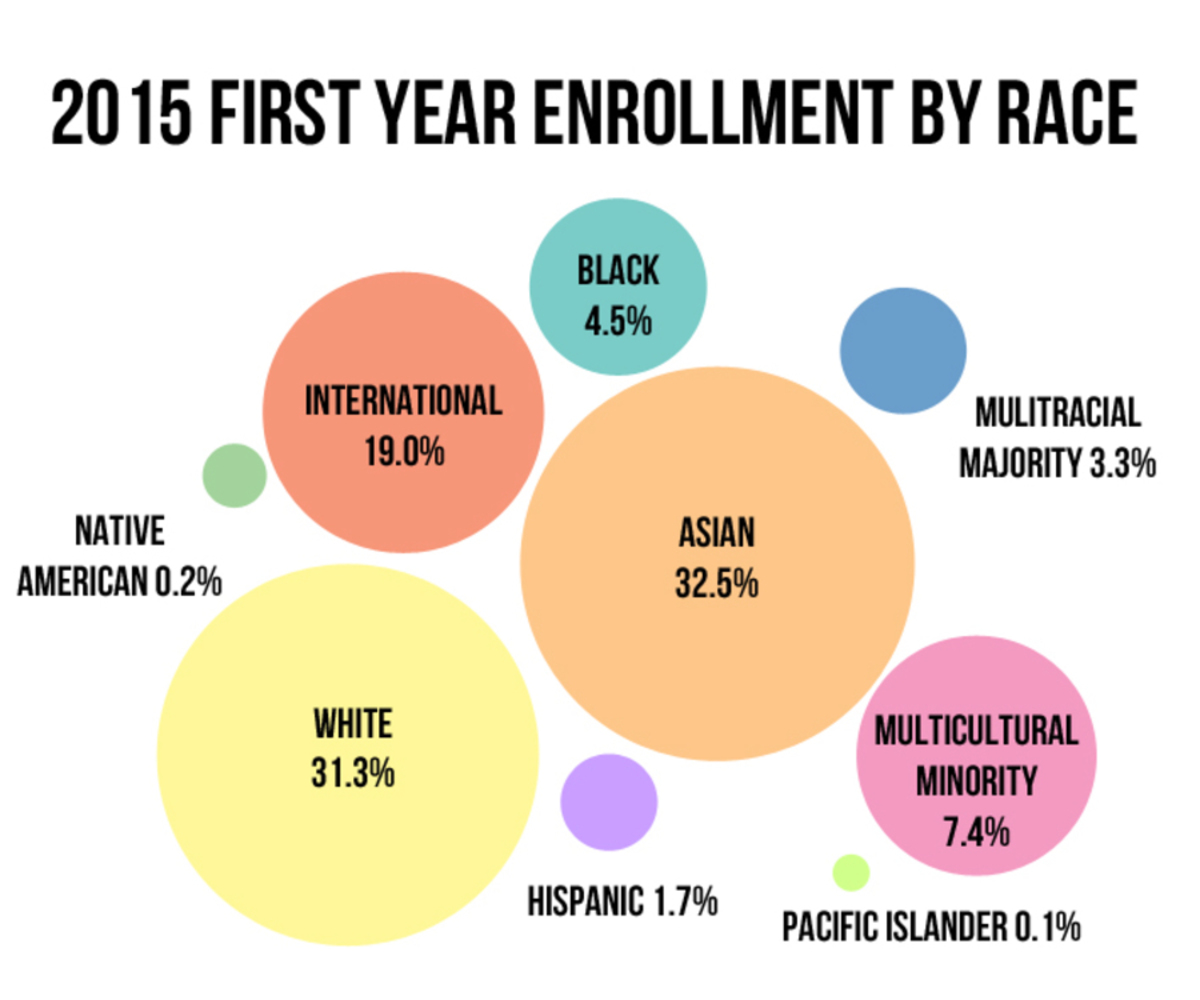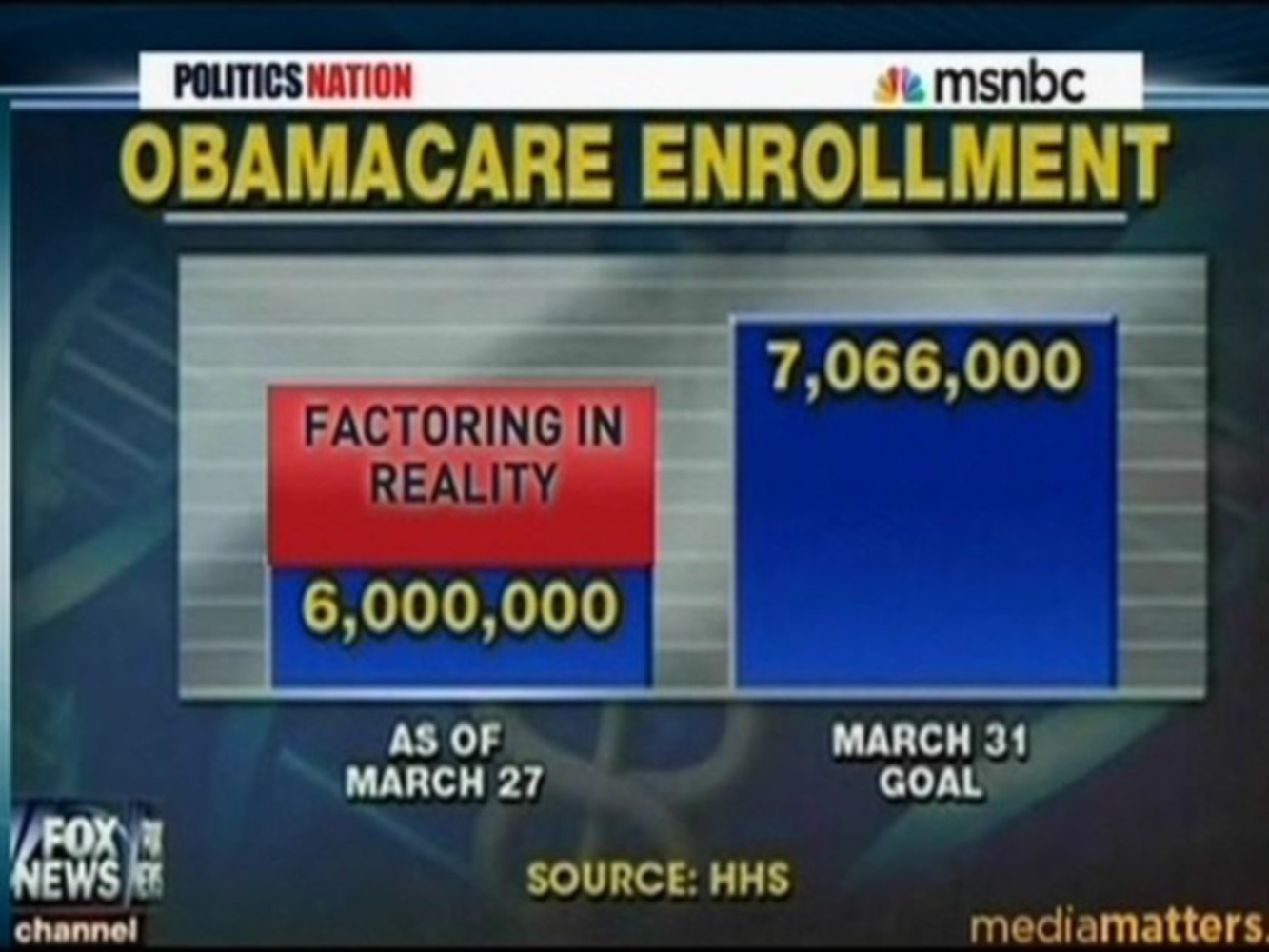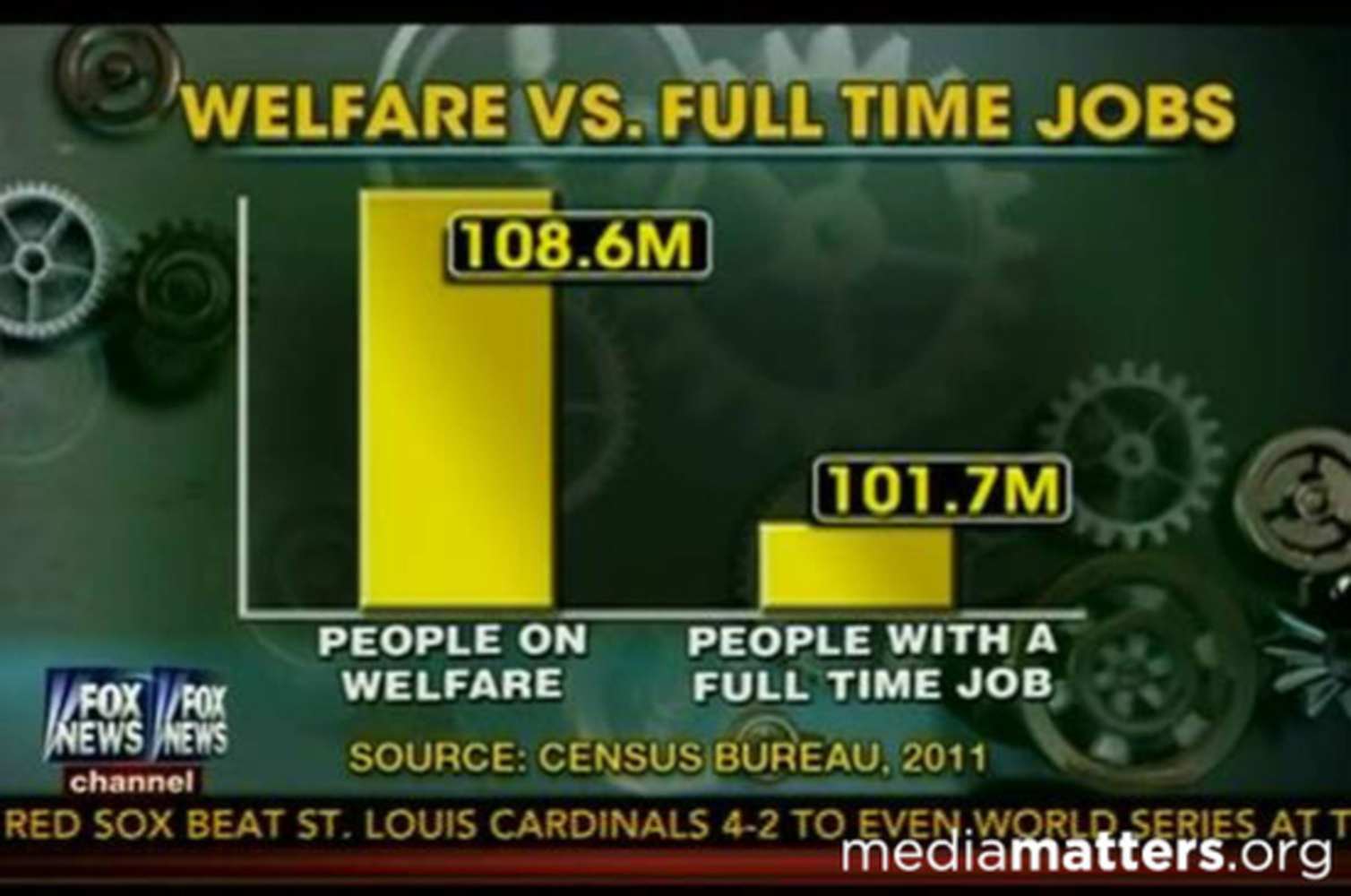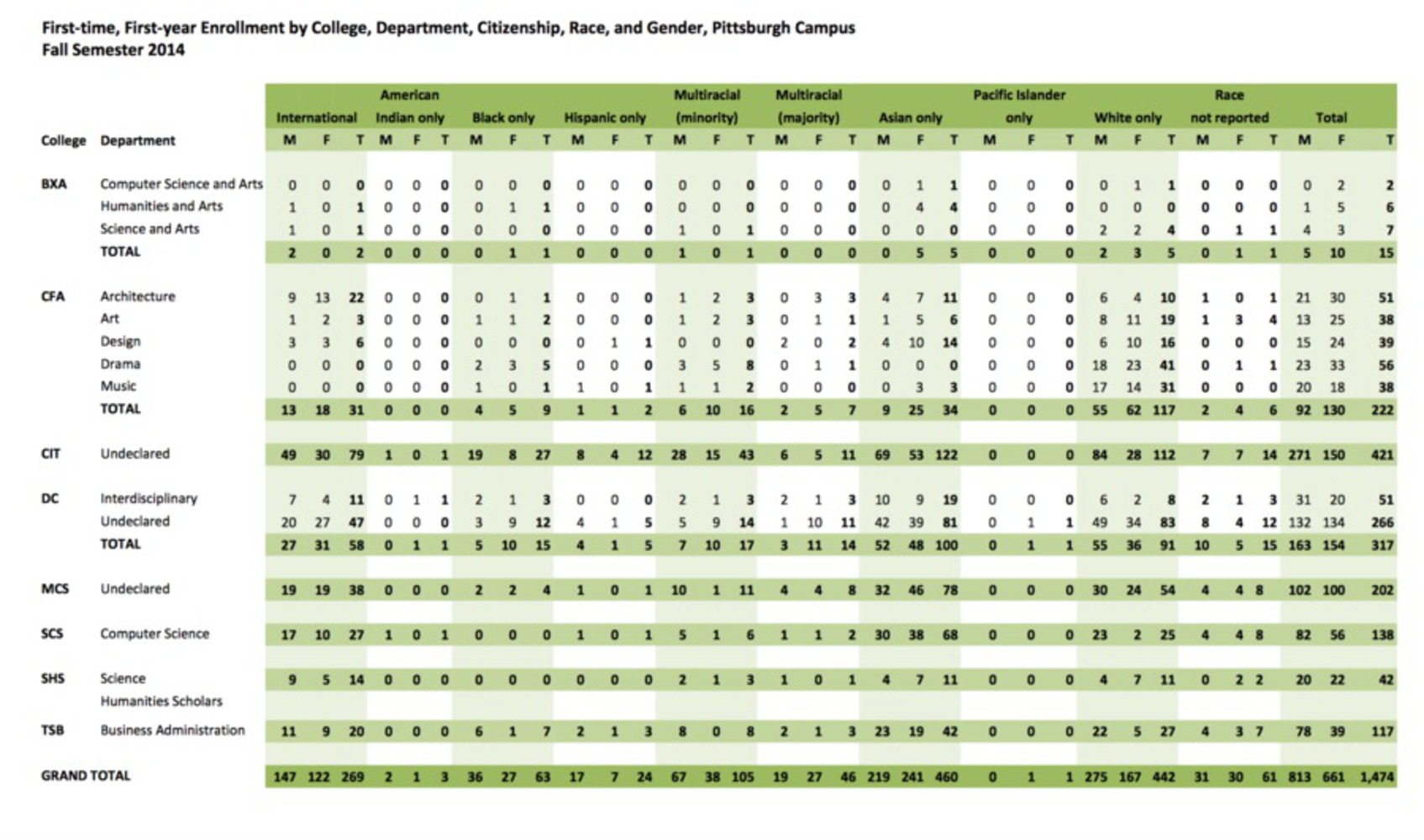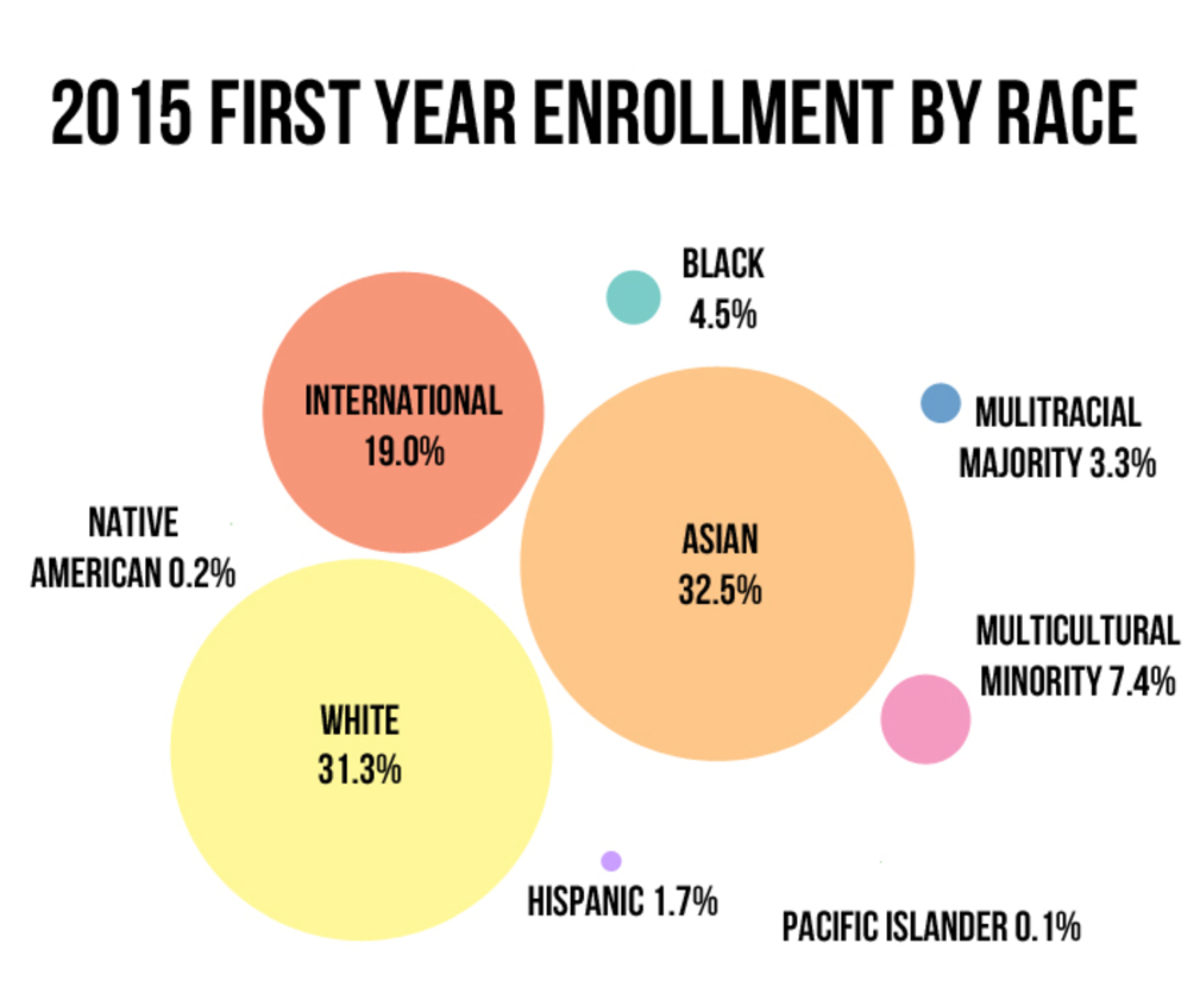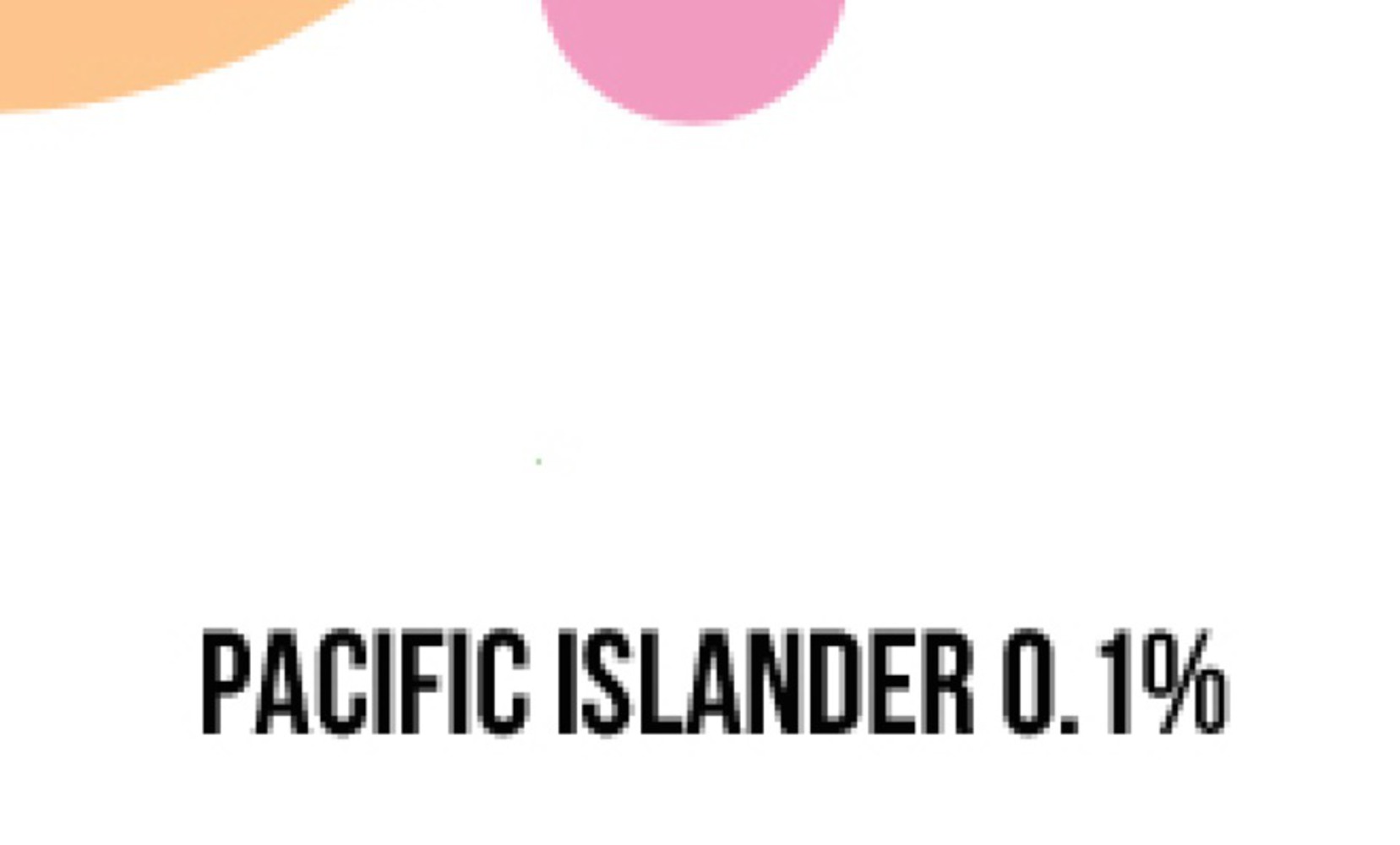Intention
When I first read the project statement, I thought about the ways diversity is depicted and how the ways institutions define race can sometimes lead to information being skewed in a certain way. Using data directly taken from Carnegie Mellon's self-reported 2015 Factbook, this project will take the universities reports on the racial make-up of students and display it in a way that is deceptive. While the product will be intentionally misleading for the purposes of this class, I hope that doing so will make people think about how diversity is reported and how the way racial make-ups are categorized causes systematic misreporting that implies student bodies are more diverse than we actually are.
